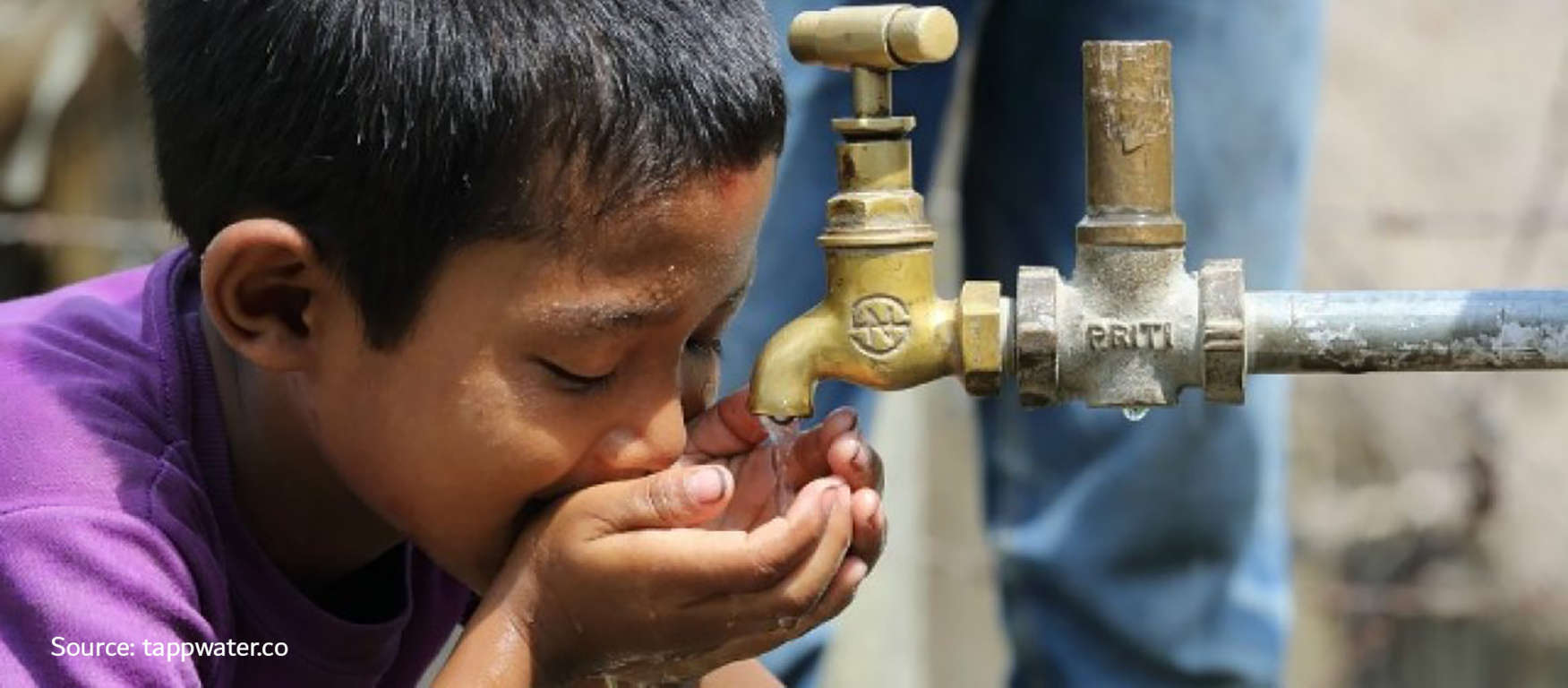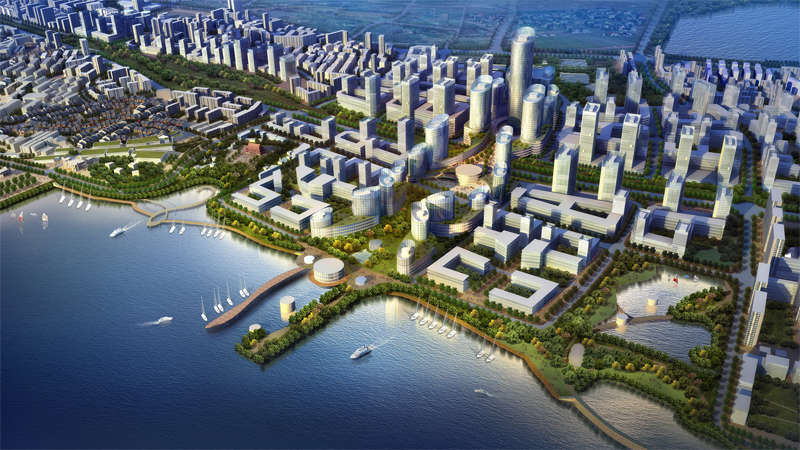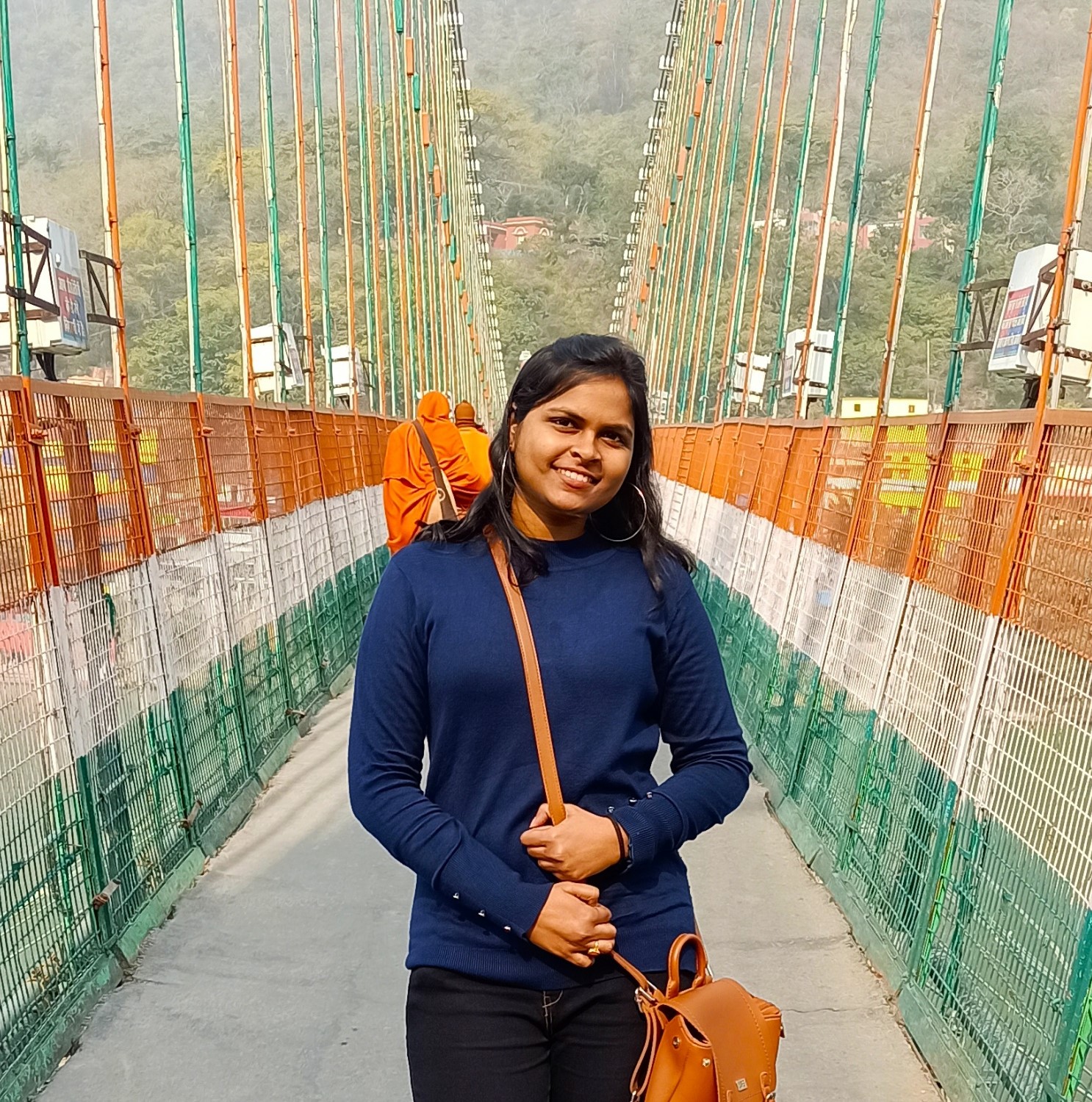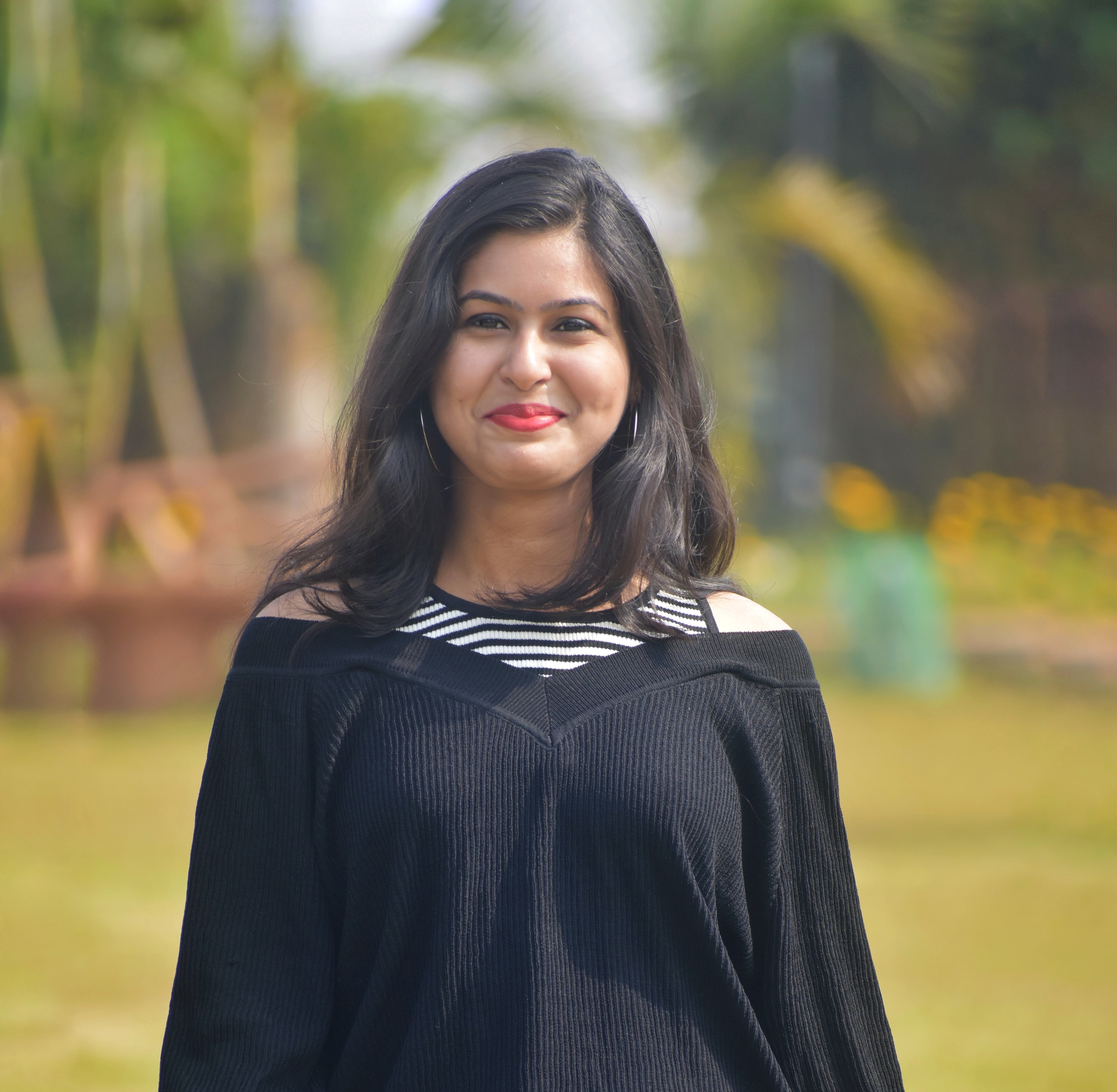HEALTHY CITIES: A NEW NORMAL FOR COVID-19 ADAPTATION AND MITIGATION
By Shreya Jaiswal :
An architect and aspiring urban planner having a year long experience of
working on multidisciplinary urban projects. She is currently pursing masters
in urban and regional planning at School of Planning and Architecture, Bhopal.
She looks forward to engage her knowledge into betterment of society via making
cities livable and sustainable. She is an avid writer and researcher at heart,
and holds keen interest discourses in the spectrum of urban planning-
especially in the field of ecological urbanism, socio-ecological resilience,
climate change adaptation & mitigation, healthy cities & communities
etc.
By Samragee Paul: A student of Masters in Urban & Regional Planning in the School of Planning & Architecture, Bhopal. Having lived in NCR and observing cities growing and changing from the past decades, facing problems of traffic congestion, climate change, shortage of housing and growth of slums in the neighborhoods. She has a keen interest in settlements, sustainability, communities & development. She believes, the key to bring success in any project is to involve communities in planning from the grass-rot level. Planning is for the people and by the people. She has always tried to experience fully what each aspect has to offer, not only physically, but also socially, culturally, and economically.
Ever since the recent pandemic COVID-19 began, the
things around us had a huge impact and changed unpredictably. From the economic
crisis to migration of the labor force to positive and negative effects on the
environment, the outbreak has affected the globe unprecedentedly. Researchers
and scientists across the globe are working day and night to find a vaccine for
SARS-CoV-2, the virus responsible for the COVID-19 pandemic. Also, specialists
suggest, most of the symptoms are treatable, and less dangerous to human health
if early care from a healthcare specialist is provided. However, the pandemic
outbreak has prompted land-use planners to re-think about how the cities are
planned.
Today’s cities are not been able to cope up with the threats of a
pandemic as they are not designed accordingly as the case of old settlements
like Harappan and Mohenjo-Daro civilizations where they are more focused on
sanitation and grid planning. Nowadays to meet the demands of the overcrowded
population the cities are expanding in a haphazard pattern in any growth
direction extending the limits of municipal and planning boundaries. Pandemics
pose greater threats to lives, economies, and societies at large. Over the past ten decades or so, there were many deadly pandemics like
Influenza, Cholera, Dropsy, SARS, Ebola, Bird flu, Swine flu, Nipah, and now
Covid-19. The people are living in an era of pandemics,
and it has become extremely important to design the cities of tomorrow which
are safe and habitable.
Novel Coronavirus (Covid-19) is the most recent pandemic that has resulted in an unprecedented social and economic impact on society (Kummitha, 2020). Though we are fighting with this pandemic the same way as we have fought with other pandemics in the past by adhering to the guidelines issued by WHO and other renowned organizations. The old saying “Prevention is better than Cure” was true then and now.
COVID-19: No nation equipped to manage
Dealing with the COVID-19 pandemic along with its unforeseen challenges has taken a substantial price from all people globally. It is being measured as the most critical worldwide health tragedy of the 21st century & the extreme challenge that people have faced after the Second World War. A new infectious respiratory disease appeared in Wuhan, Hubei province, China in December 2019 and was named as COVID-19 by WHO. According to WHO report (as of 19th September 2020), the current outbreak has affected over 30.3 million people and killed 0.9 million people in 213 countries worldwide.
Map 1 COVID-19
confirmed cases worldwide thematic map
Source: Ourworldindata-European
CDC
On the other hand, India’s COVID-19 caseload rose to 5.3 million and 0.08
million deaths. Moreover, the economic impact of the pandemic is
largely disruptive in the nation largely due to preventive measures adopted by
the government – the nationwide lockdown of all public and private services.
India is experiencing the steepest contract ever- 23.9 % in the
GDP; thus this pandemic is making its citizens vulnerable to not
only poor physical health but also mental health.
Figure 1 COVID
-19 confirmed cases (India)
Source: Ourworldindata-European CDC
Healthy cities: A way forward for future
sustainable cities
It has been proved by various researches, that climate change affects the
health and well-being of people living in urban areas based on indigenous
situations and vulnerabilities. Moreover, the jeopardy of deaths and epidemics
from various disasters like floods, storms, etc. increases due to damage caused
to urban infrastructure and services. Therefore, to reduce such risks
associated with human health, the healthy cities concept was introduced, which
improves citizens’ quality of life, reduces health costs and mortality;
characterized by a green built environment, facilities for physical activity,
etc.
A healthy city is one that continually creates and improves physical and
social environments and expands community resources that enable people to
mutually support each other in performing all the functions of life. The
healthy cities concept was created and launched by the WHO in 1984. It believes
any city can become a healthy city if it is willing to work for improving its
health and has a structure to follow when it is deeply committed to fulfilling
its goal toward health.
The current outbreak made us appreciate the value of accessible open spaces
that allows movement within dense urban areas. Quarantined citizens, due to lack of adequate open spaces
experience discomfort and suffocation that is affecting not only their physical
health but also mental health. This pandemic has a major
toll on people especially living in poor living conditions who neither get
fresh air and light nor space for physical movement, causing severe stress.
Therefore, the densely populated Indian cities need to focus on linking the
blue-green spaces at the local neighborhood level by adopting land readjustment
practices, that help people come out of their confined spaces in a regularized
manner and improve their health.
Importance of integrating health in urban planning
Fostering good livelihoods, forming resilient and lively communities,
enabling and promoting mobility, encouraging societal collaboration, and
shielding exposed populations require cities to make health as an important
asset. The determinants of health outcomes and health equity such as land-use patterns,
urban form, biodiversity, nature, transport, etc. affect Urban and territorial
planning by the use and access of resources. It is a vital pillar of the New
Urban Agenda and the accomplishment of SDG’s. Urban policies can affect not
only the quality of places in which we breathe, make living, and entertain but
also the essential services required for us to live and hence affecting
people’s health and well-being.
The recent publication by WHO “Integrating
Health in urban and territorial planning” highlights a few
examples of why it is important to integrate the two. It elaborates on:
-
How unhealthy environments like air, water, soil pollution,
etc. contribute to various diseases and how health burden aggravates at a
place that is poorly planned, managed, and maintained.
- How poor nutrition and obesity is
increasing at a faster pace due to less physical activity by people.
-
How health burden and deaths increase
with poor access to water, sanitation, and hygiene (WASH) at home.
-
How global warming can expose 350
million people to deadly heat stress.
- How traffic-related environmental noise leads to cardiac diseases,
cerebral damage, sleep commotion, and infuriation.
Therefore, by reducing the means cities and human settlements are planned, designed, funded, established, administered, and accomplished, the healthy cities concept along with the New Urban Agenda would support to combat poverty and hunger; lessen disparities, encourage sustained, inclusive, and sustainable economic growth; improve health and well-being; foster resilience and safeguard the environment.
Figure 2 Therapeutic
gardens in Singapore
Source: Sports Singapore
Applying a health lens in
planning bridges the gap that leads to adverse health outcomes. It can help
create sustainable urban planning via planning Compact, connected,
socially inclusive, and resilient cities. It helps support active mobility,
public transport, accessible green areas, water bodies, and hence sustaining
the well-being and resilience of the urban poor.
How
healthy cities can help adapt & mitigate COVID-19?
The COVID-19 crisis has highlighted and exacerbated
the structural weakness of health systems. It highlights the need to plan and
manage cities to mitigate the risk of communicable diseases and ensure
equitable access to healthcare. The two key variables that stand out in this
crisis include urbanization as well as inequality.
a) Leanings from successful experiences:
· The advent growth of cities
since the very Industrial Revolution when large city green chunks were used for
the factories and industries poisoned the cities and infected human settlements
with outbreaks of typhoid and cholera, especially in places like London
and New York. Then at that time, these became the main community
health problems that led to the construction of new sewerage and sanitation
systems. With sewerage systems, the mortality rate from pulmonary diseases
alone was reduced by 50%” in certain towns of England.
· The National Parks Board of Singapore decided
on increasing the mental and emotional well-being of its residents
is adding therapeutic
gardens in public parks
cities' for bringing focus on health and well-being in planning and making city resilient and sustainable.
· A Pilot Study of the Trans-Yamuna
Area in Delhi was initiated in 1997 with WHO-SEARO assistance for
improving health conditions. A new sewerage system was implanted through the
Healthy city planning approach and special attention was given to solid
waste to improve the health of the community by
raising awareness about serious health, social, and environmental issues.
· Another example is of Bogotá, the capital of Colombia who has promoted biking as a solution to mitigate infection risk from COVID-19 by making Temporary bike lanes implemented (117 km (72 miles), 35 km (22 miles) during the lockdown as a measure to maintain social distancing while reduce crowding on roads and streets.
Figure 3 Bogota map
highlighting bike lanes
Source: Transformative mobility
a) Directions for future
·
The dimensions, approaches, tools of
planning for integrating health in urban and territorial planning, provided by Integrating health
in urban and territorial planning sourcebook may be useful to planners.
By applying them iteratively
in the development of policies, plans, or projects, and allowing options to be assessed
and new solutions to emerge, may help avoiding outbreaks like COVID-19.
·
Using accessibility indicators or parameters for
monitoring vulnerability of urban health systems such as ease of living index,
happiness index, age longevity, disease incidents, water & air quality,
etc.
· Change
agenda from one size fits all towards local interventions that
helps create healthier outcomes.
·
Using open data source such as Artificial intelligence,
Big Data for linking health as a layer, spatially.
·
Adopting green infra/ nature-based solutions for
disaster control, improved air quality, tourism, food security etc.
·
Promoting formation
of joint benefit authorities for efficient
inter-departmental collaborations.
b) Interventions across
different levels
There is enough evidence to show the co-relation
that exists among infrastructure provision, active mobility and health &
well-being of society. Moreover, the physical movement helps to improve
immunity against diseases. Bicycles, a form non-motorized transport that runs
on zero energy act as green and safe transport and helps lessen emissions
caused by transportation systems. Thus, such initiatives along with others
would also help contribute to the Sustainable Development Goals (2030).
Taking into account the above-mentioned advantages
of active mobility, following strategies could be considered on various
planning levels:
o Public space/ Local Level:
·
Developing more public green pockets and parks along with resting areas.
· Street
and sidewalk redesign-including bicycle tracks and green belts.
·
Promoting blue-green infrastructure – the synergy between the two helps
mitigate climate change causing natural disasters.
o Neighborhood Level
·
Improving active mobility by constructing new bike lanes and focusing on
the idea of 15-min mixed use neighborhoods.
·
Promoting dense-compact cities as dense environments help thrive
population with good health and create car-free cities.
·
Construction of Waterfront Park/ community parks for resilient and
healthy cities and communities.
· Improving existing informal settlements scenario by providing access to affordable housing at generous locations.
Figure 4 Context
& Scale of Inclusive Healthy Places
Source: Inclusive Healthy
Places Framework
o City Level
·
Preparing public space network and mobility plans.
·
Improving bus rapid transit system infrastructure for better
accessibility and connectivity.
·
Preparing resilience plans for each strategic important cities.
· Focusing on bike share
networking and strategic station locations.
o Regional Level
·
Laying stress on congestion pricing policy.
· Regional level blue-green
linkages, constructing wetlands, riparian buffers etc., for resilient cities.
·
Leveraging regional plans
for economy, transport, environment, etc. for creating better environments.
Thus, with the help of the above-mentioned
strategies and way forward developed on basis of various literatures and basic
understating of authors, can help adapt, avoid and mitigate the infectious
diseases like COVID-19. Post this pandemic, holistic planning is required which
is oriented towards better health via applying health lenses on public spaces,
neighborhoods, cities, and the regional level.
C Conclusion
Health is an important worldwide development agenda for all nations and
cities. It needs associations between varied societies and practitioners:
administrations at all levels, policy-makers, urban planners,
environmentalists, and public health departments. The cross-disciplinary
collaboration of public policies, urban planning, and design using open public
spaces, parks, urban forests, and integrated blue and green infrastructure are
needed as tools to make cities healthy. It calls out to professionals and
practitioners and to the users to adopt for blue-green infrastructure, which is
critically important for health and welfare.
The concept of including Health in Urban Planning makes a remarkable
statement towards inclusive and equitable cities that contributes to creating a
sustainable and healthy environment for the city dwellers. With cities facing
challenges of congestion, overpopulation, pollution, and pandemics, it became
more important to connect with the concepts of Healthy cities for human health.
The strategies developed by the WHO forum can help the cities to work towards
healthy city planning and it is the responsibility of the 21st-century society
to address this issue to fight against the problems faced by the cities.
Planners need to realize their role in society and question the things that
have gone unrecognized so far. Case studies show that bringing health parameters
into planning has a positive influence on city infrastructure and people. Promoting the use of blue-green spaces, physical activities on a
neighborhood or local and approachable level can help negate the impacts of
infectious diseases, chronic illnesses, etc. shortly. However,
inter-departmental collaborations such as joint benefit authority mechanisms
are important to find a holistic solution.
Related Articles

Efficient water pricing is necessary to prevent a tragedy of commons: A case for efficient water pricing in water supply in Indian cities

TOWN AND COUNTRY PLANNING ACTS- A CRITICAL ANALYSIS OF THE HARYANA DEVELOPMENT AND REGULATION OF URBAN AREAS ACT, 1975

JOURNALISM IN PLANNING
WALKABILITY- A SYNONYM TO URBAN MOBILITY



